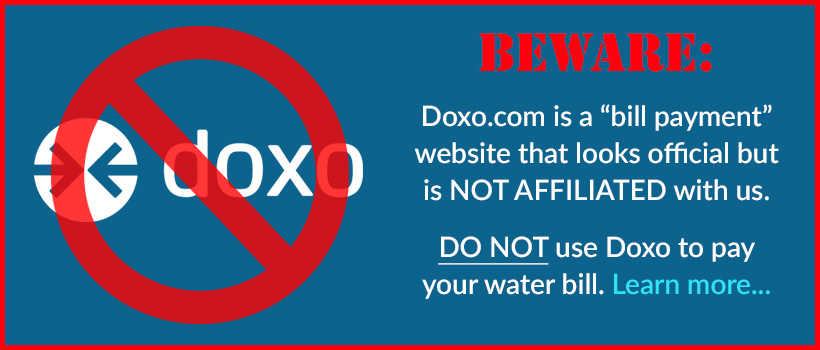Understanding the Doxo Warning Phenomenon
Online bill payment platforms offer convenience, but not all services are created equal. In recent years, many consumers have received what’s referred to as a “Doxo warning.” These alerts often come from utility companies, banks, or even online forums, cautioning users against using the Doxo platform to pay bills. While Doxo presents itself as a third-party bill pay solution, some companies do not officially partner with it—and that’s where problems can begin.
What Is Doxo?
Doxo is a third-party bill payment service that aggregates thousands of service providers into a single platform. The idea is simple: you create one account, pay all your bills in one place, and get reminders to avoid missing due dates. While that sounds like a smart financial move, issues arise when service providers do not have a direct partnership with Doxo.
Here’s where the Doxo warning comes in. Many utility companies, municipalities, and even healthcare organizations publish notices on their websites stating they do not endorse payments made through Doxo. The reason? These payments often result in delays, service disconnections, or misapplied funds.
Why Companies Issue a Doxo Warning
When you pay a bill directly through your service provider’s website, your transaction is typically processed immediately or within a defined window. But with Doxo, payments may be routed through additional steps, causing unnecessary delays. For time-sensitive bills—like electricity, internet, or water—these delays can lead to late fees or even service interruptions.
Some companies issue a Doxo warning to protect customers from:
- Payment delays that lead to penalties or disconnections
- Inaccurate billing information not reflected in real time
- Hidden service fees that aren’t charged when using the provider’s own portal
- Customer service challenges, as Doxo is not directly accountable to the biller
The core issue is a lack of integration between Doxo and the official billing systems of many service providers. This disconnect creates room for complications.
Real-Life Impacts of Ignoring a Doxo Warning
Let’s take a case study. A homeowner in Texas used Doxo to pay their monthly electric bill. Doxo processed the transaction, but due to a delay in transferring the funds to the utility company, the payment posted after the due date. The result? A $25 late fee and a disconnection notice.
Situations like this aren’t rare. Online forums and complaint boards like the Better Business Bureau (BBB) show a pattern of customer frustration, often linked to late payments and unexpected fees—all stemming from using platforms like Doxo without fully understanding the risks.
Is Doxo Illegal or a Scam?
No, Doxo is not illegal, nor is it a scam. It is a legitimate company that offers a digital solution for organizing and paying bills. However, the confusion stems from its branding and marketing. Users may assume that Doxo is an official payment partner of the companies they’re trying to pay, which is not always the case.
That’s why consumers are urged to read the fine print and confirm whether their service provider officially supports Doxo. The absence of this confirmation is often the trigger for a formal Doxo warning from the provider.
Safer Alternatives to Using Doxo
To avoid payment issues, follow these safer alternatives:
- Pay through the official website of the service provider. This ensures immediate posting and accurate account updates.
- Set up direct bank payments via your bank’s bill pay feature. Many banks offer reliable, fee-free services integrated with utility providers.
- Use official apps or portals. Many companies offer apps that include autopay features and real-time account management.
- Contact customer service before using any third-party platform to verify whether it is officially supported.
How to Know If a Company Has Issued a Doxo Warning
Check your biller’s official website or contact their customer support. If they’ve issued a Doxo warning, it will usually be listed in their “Payment Options” section or customer alerts page. Additionally, some companies explicitly state that Doxo is not affiliated with them and should be avoided for online payments.
What to Do If You’ve Already Used Doxo
If you’ve recently paid a bill using Doxo and suspect a delay, take the following steps:
- Contact the biller immediately to verify if payment was received
- Reach out to Doxo’s support team with transaction details
- Keep a record of all communication and confirmation emails
- Avoid using the platform again for unsupported providers
Proactive communication can sometimes prevent service disruptions, especially if the payment is on its way.
FAQ:
Is Doxo safe to use?
Yes, Doxo uses secure technology, but safety doesn’t guarantee speed or compatibility with your biller’s systems.
Why is my utility company warning me against using Doxo?
Because they may not be partnered with Doxo, which can lead to payment delays or misapplied funds.
Can I get a refund if my payment through Doxo is delayed?
Refunds are case-specific. Doxo has a customer support process, but responsibility can be hard to pin down if the service provider isn’t directly affiliated.
How can I verify if my biller accepts Doxo?
Visit your provider’s official website or call their customer service to confirm supported payment methods.
Will using Doxo affect my credit score?
Only if a delayed payment leads to a missed bill and your provider reports it to credit bureaus. Always verify timely processing.
Conclusion:
Doxo isn’t inherently bad—but using it without understanding its limitations can lead to unnecessary headaches. A Doxo warning is a sign that a company wants to protect you from payment issues. Always double-check whether your biller supports third-party platforms and use official methods whenever possible. If you’re already using Doxo, stay vigilant and keep communication lines open. Your best defense is staying informed.

